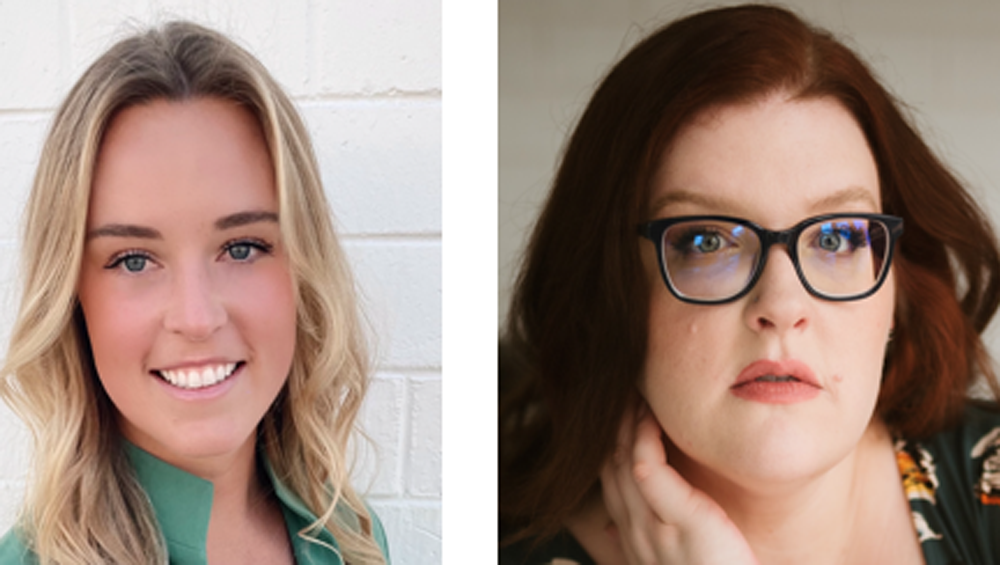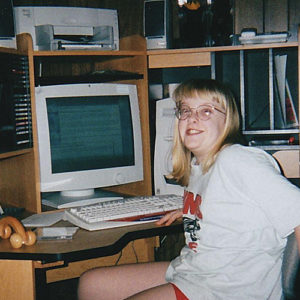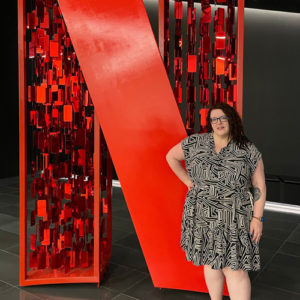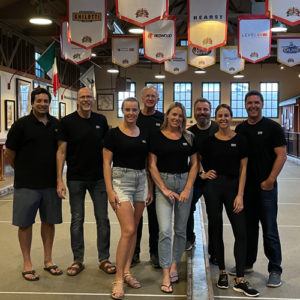
Netflix’s Pena, Datazoom’s Strutner Embody Persistence As TVN’s Women To Watch

A problem-solving pair with persistence are this year’s recipients of TVNewsCheck’s annual Women in Technology Women to Watch Award.
Kylee Peña, manager for creative technologies program management at Netflix, and Diane Strutner, CEO and co-founder of Datazoom, will be honored during an April 26 ceremony at the NAB Show in Las Vegas.
Kylee Pena Connects The Dots
Peña’s career bridges her loves of visual storytelling, technology and problem solving. She manages the Program Management, Technology & Standards Team for Production Innovation at Netflix.
One connection that changed the direction of her life was a Christmas gift from her parents when she was a young teen.
That video camera allowed her to connect the “theater nerd with the growing technology nerd in me,” she says. “I had a real intuition for problem solving, especially when it came to creative technology.”
One problem she solved was finding a way to digitize analog sources as a consumer at a time when that was not easily done, she says.
“I developed a muscle for troubleshooting very early, and I loved it. I love that. I love experimenting. I love pushing the boundaries it offered me,” Peña says.

Peňa with her first computer in 1999.
She also had developed a love for video editing. “I remember the moment I realized I could do this for a living.”
She was digitizing and editing something she and a friend had shot on high 8 tape when lightning struck nearby, killing the power and knocking her out of the “editor coma” she was in.
“I realized it was 5 a.m., and I’d been up almost a full day, and I was full of energy and excited by what I was doing,” she says. “When the power came back on, I wrote in my LiveJournal, ‘I’ve been editing all night and I don’t feel at all exhausted by it.’”
She knew then that video editing was something she could pursue, and she has focused her career on “bridging technology and visual storytelling with problem solving.”
When she thinks about workflows, she thinks about how things connect, how systems work and how to continually make those things better and better.
And one way she does that is by connecting dots. Instead of being a subject matter expert on one specific thing, she says, she knows “a bit about a ton of things” and goes deep on a few.
“I like being that connector, connecting the dots across these different things,” Peña says. “The best way for me to enable people to do their best work is just get a lot of different experiences and bring the right ones to the table at the right time.”
For example, she says, her perspective of production isn’t just on the engineering side or being on the set.

Peňa at Netflix in Hollywood.
“I’ve been in the middle of it,” she says, so she has a “big picture” idea of how to connect tools and metadata and stories in a way that’s useful.
During an internal Netflix Hack Day, which allows employees to work on projects that are not necessarily prioritized by the company, she led an effort that saw the team making production data from call sheets, which normally would be discarded, available on screen for consumers as a scene summary. She was project manager for the first 4K HDR anime nominated for an IBC Innovation Award.
And collaboration with her team to brainstorm and come up with solutions is Peña’s favorite part of her job. “People are what keep me in it.”
Women should make their presence known in the business and technology environments, she says.
“Don’t be afraid to take up space. In fact, you should take up space. You should be present, and other people should feel that presence. You should be in a room and people look to you for guidance and direction,” she says. “A lot of us are taught to make ourselves small or to blend in or to assimilate or to adapt you know traditionally masculine or workplace norms or whatever, whoever decided what those norms are. And I think that we need to be present for each other and show up in the way that makes us comfortable and relentlessly support each other while we do so.”
Currently pursuing a master’s in integrated design, business and technology at the University of Southern California, Pena founded the nonprofit Second Act Foundation, which helps women over 30 transition to STEM careers.
She is the 2022-23 Hollywood Region Governor for the Society of Motion Picture and Television Engineers (SMPTE) and belongs to the Junior League of Los Angeles.
Outside of work, she enjoys thrift shopping, writing, traveling and expanding her David Bowie record collection.
Diane Strutner Wrangles The Data
Succeeding in technology requires persistence, grit and the ability to learn from failure, and Diane Strutner credits her upbringing with helping her succeed as a non-technical person in a technical field.
“Something my parents instilled in me is to not be afraid of things I don’t know,” she says. “I’m not afraid to ask questions or say I don’t know something.”
And she was encouraged to try new things, even if she failed at them. This willingness is fundamental to entrepreneurial life, she says.
“Every day you’re learning something different, and every day, to some extent, something fails, and you have to get over it really quickly.”
At the same time, persistence and grit have helped her turn her vision of “being the glue of data” into a reality, she says.
Six years ago, Strutner was living in Barcelona but wanted to start a data analytics company that helped companies in the U.S. make better decisions based on data. But she didn’t want the additional challenge of serving a market from a different country. She moved back to the U.S. and Datazoom was accepted into an accelerator program.
The company aggregates data from varied sources and allows providers and advertisers to see how consumers are experiencing direct to consumer content and the advertising in it.
“Everyone wanted to make more decisions with data, but the industry didn’t have a great data set,” she recalls.
One reason, she says, is that gathering all that data is complex and hard for many reasons, not least of which is a lack of industry standards.

Strutner competing in the international Beach Volleyball Around The World tournament in Mallorca in 2012.
“How data appears doesn’t follow many industry standards,” she says. “I thought it was an important job for someone to step in and become the glue of data for the industry, and that’s what we are at Datazoom. We are ultimately an enterprise data infrastructure platform.”
But creating data standards is a tall and laborious order, she adds. Factors like data volume, variety and veracity all come into play.
“It takes a really long time to do something so challenging really well,” she says.
Creating standardized sets of data required persistence, she says. “It’s nothing other than thousands and thousands of hours of diligent work to understand how the data is expressed to make sure the tools we use to understand the data are accurate.”
She says starting Datazoom was challenging for reasons that had nothing to do with data. Her background was in sales and marketing. In short, she was a non-technical founder in a tech space, and a female in a male-dominated industry.
“It’s really easy to say that someone who doesn’t know all of the details about how something works might not know how something can work better,” she says.

Strutner and the Datazoom team “onsite” at Campo Di Bocce, Los Gatos in September 2021.
At the outset, Strutner was learning how the industry worked.
“Parts of it to me just didn’t make sense. I wasn’t focusing on how it works today. I was trying to focus on how it actually works efficiently, and the answer I came up with is that it doesn’t,” she says.
As far as Strutner is concerned, having data is having control. But at the time, she says, metrics are subjective. Data companies make critical choices about how the data is captured and summed up and whether all data is averaged or if outliers are removed from the data sets, she says.
“These are all decisions at the end of the day that analytics companies make with data that are subjective” that she believes companies may prefer to make for themselves.
And she wanted to let customers make those decisions themselves.
“Having data is having control, it’s having flexibility,” she says. “It’s being able to get whatever insight you need out of that data set. We say internally that data’s worth a thousand metrics, and that’s true.”
And Strutner’s advice to others who want to solve problems is to make sure the problem they want to solve is a big one, and that the solution they want to offer works.
“You’ll figure out how to make it work and how to get the industry to adopt it and how to overcome all of the roadblocks that other people so easily identify from day one,” she says. “But if you have a really important solution and a great vision and understand the value that that could bring, and that’s part of the unique insight I had. I really knew that if we had access to this data, people would do things wildly differently, and they are. That’s what was a driver to keep going and to keep working towards building the vision for Datazoom that I have today.”
Read the profiles of all of the other 2022 honorees here.
In a webinar on Wednesday, April 13, this year’s Women in Technology Award winners shared thoughts on everything from multi-cloud strategies to the rise of machine learning in television workflows to how NFTs, Web3 and the metaverse may affect TV production. Watch the full video here.
































Comments (0)